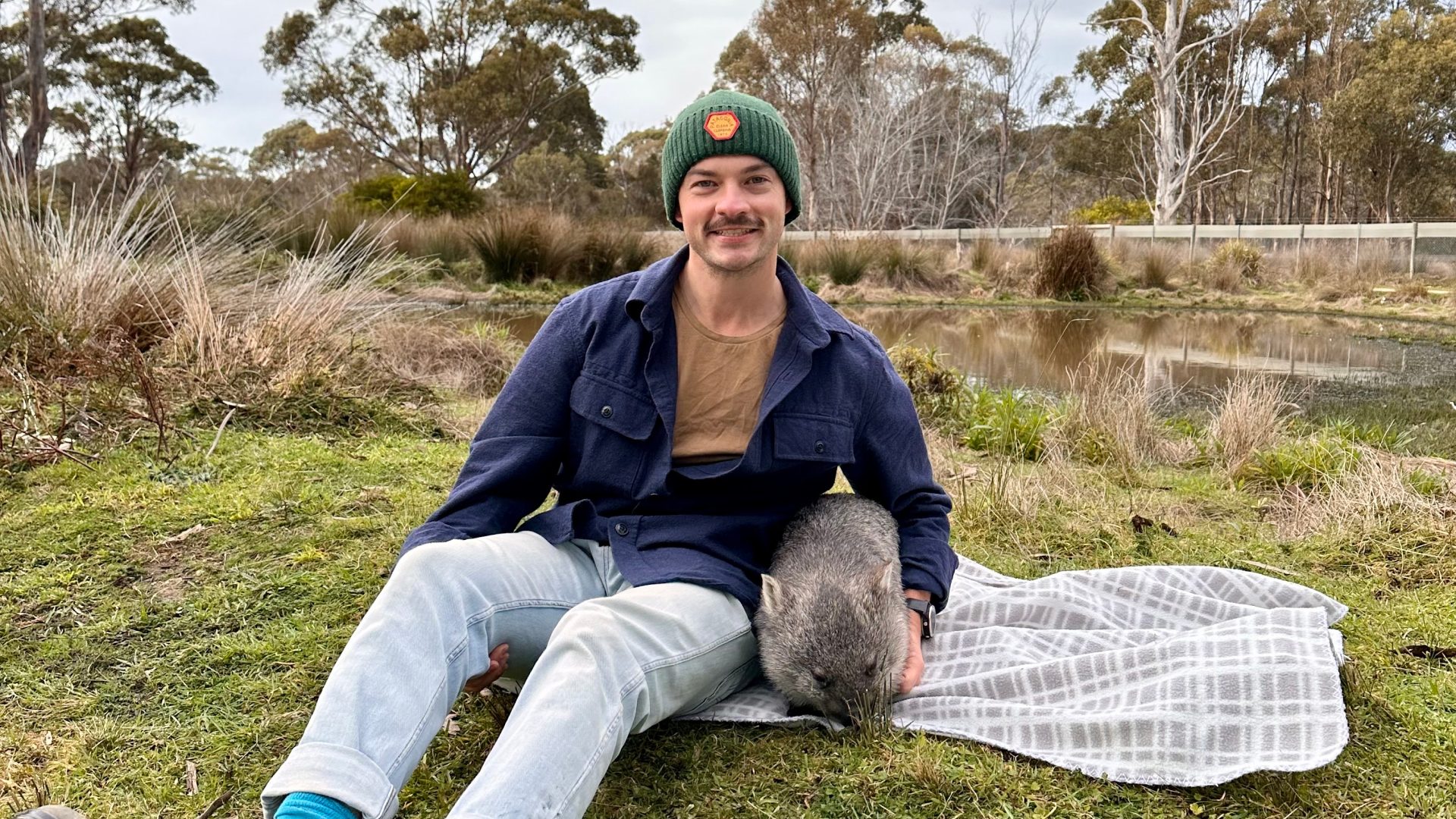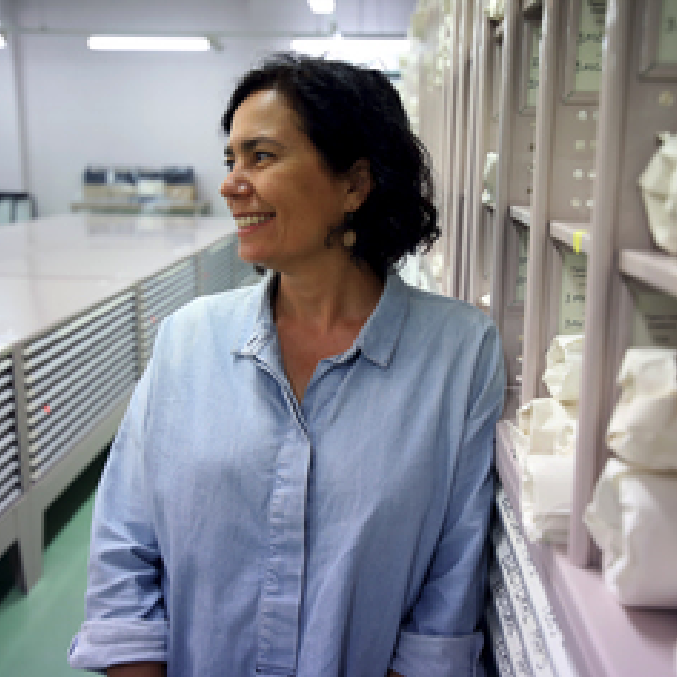
Tasmania, Australia’s southernmost state, recently invited work-weary Aussies to apply for some rather, erm, unique, workcations. Our writer, Patrick Boxall, hit the jackpot when he was hired to be a Wombat Walker.


Tasmania, Australia’s southernmost state, recently invited work-weary Aussies to apply for some rather, erm, unique, workcations. Our writer, Patrick Boxall, hit the jackpot when he was hired to be a Wombat Walker.
Over 5,000 people applied to walk George the Wombat, and for whatever reason, he chose me. I’m told that he’s a good judge of character—a compliment, no doubt—but this comment feels infinitely more threatening when I greet George and he proceeds to bite my boot.
Nat Hill, the wildlife manager at East Coast Natureworld, reassures me that George’s decision to bite my boot, instead of accepting my wide-armed advances, is a good sign. It means he’s almost ready to be released into the wild. And while I’m happy that George is ready to go home, this—a chaotic, somewhat aggressive teen wombat—was not in the job description fine print.
“You want to have less hand contact with them once they reach a certain age and size,” Nat explains while flipping George in her arms. Judging by the way George nibbles at Nat’s jacket, I can only assume the preferred amount of hand contact for a wombat of George’s age and size is zero.
George arrived at East Coast Natureworld in January this year. He was hand-raised by a family from when he was a pinky (a baby wombat with no fur) to when he was two kilograms, at which point the family dropped him off. He now weighs 12 kilograms and will soon be introduced to another wombat—a female named Dottie, with whom he’ll hopefully be released into the wild.
I can only wish you luck, Dottie.
Grace is the playdate of my life. Together we do zoomies. We picnic on the grass. We are equally terrified when a pair of Cape Barren geese run up behind us and honk.
Fortunately Grace, another orphaned wombat, understands that I have a job to do. The wombats need walking and I won’t be going anywhere until they receive their daily quota of exercise. Nat explains that wombats are very dependent on their mum for the first 6–12 months of their life, which is why Grace is thrilled to follow me around.
Together we stroll past the Tasmanian devils and parrots and peacocks. We avoid the kangaroos, glance sideways at the geese and whenever I stop, Grace darts between my legs in search of shelter. “This is what she’d be doing in the wild,” Nat says. “Mum would be showing her where all the good spots to eat grass are.”
I can’t educate Grace in the ancient ways of the grass. But what I can offer is the comforting embrace of a thick chamois shirt, which Grace happily burrows into. Nat tells me that Grace’s rock-hard butt, which pokes out the bottom of my shirt, is her best defensive asset. In the wild, she’ll use it to not only block her burrow, but also crush Tasmanian devils and other unwelcome riff-raff against the burrow’s walls. It’s totally badass, but in, like, a good-ass way?
Grace was raised by a local woman until she was six months old. Given she hadn’t spent a lot of time outdoors, and had only been exposed to one person, she was shy and nervous when she first arrived at the park. Now, Grace is the playdate of my life. Together we do zoomies. We picnic on the grass. We are equally terrified when a pair of Cape Barren geese run up behind us and honk. I do not know whether Grace saw me leap to her defense, but perhaps she’ll appreciate what I did for her when she’s older.
I’m told it can take two years to rehabilitate a single wombat. The babies, or joeys, require four-hourly feeds through the day and night and East Coast Natureworld relies on volunteer carers to nurse them until they reach six months. It’s a collaborative effort; once the wombats are eating grass and need more space to dig, Nat and her team can take them on.
“A lot of people will say it isn’t worth it,” Nat says. “Another wombat will get hit by a car down the road, so why spend two years of your life rehabilitating one animal?”
The hardest part of Nat’s job is not knowing what happens to wombats like George and Grace once they’re released. Wombats are considered a common species, which means there is minimal funding available to research what happens to them once they’re back in the wild.
“It’s crazy,” Nat says. “You have to wait until something’s almost extinct, which is why we’re super open to collaborating with anyone who wants to look into further their success in the wild.” She uses the Eastern Quoll as an example. “People used to think of them as pests and now they’re going extinct and we don’t know why. Now we’re like, hang on a minute, are we too late? We haven’t researched these animals enough.”
Is it worth the effort of rehabilitation, then? Having spent the morning with Grace, Dottie and George—yes, even George—I can confirm that it is. And that’s coming from Australia’s (unofficial) #1 wombat walker.
****
Adventure.com strives to be a low-emissions travel publication. We are powered by, but editorially independent of, Intrepid Travel, the world’s largest travel B Corp, who help ensure Adventure.com maintains high standards of sustainability in our work and activities. You can visit our sustainability page or read our Contributor Impact Guidelines for more information.








Can't find what you're looking for? Try using these tags: